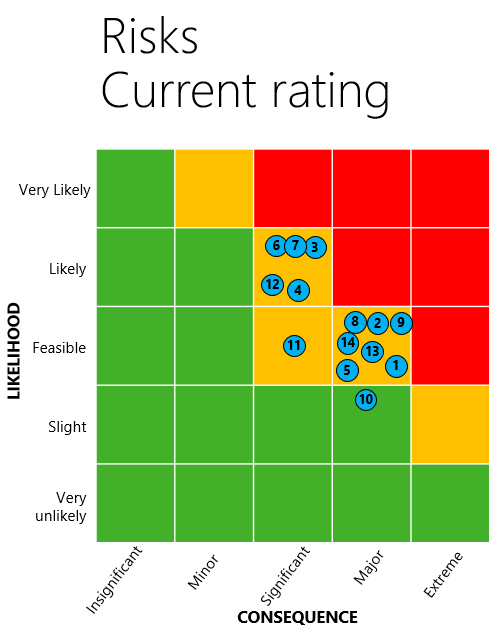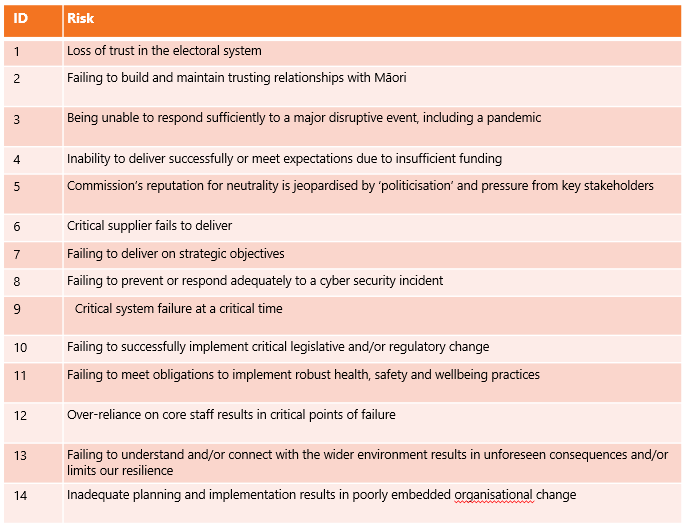



Electoral Commission
Performance Report
1 July – 30 September 2023
Highlights
Delivery
Preparation
Organisation
-GE2023 public information
-Finalised preparations for
-New GE2023 health, safety
and enrolment update
GE 2023
and welfare guidelines for
campaigns kicked off
-20,031 people employed or
approved to ensure we meet
-Overseas voting started 27
offered employment in
our obligations as a PCBU
September
General Election roles by 30
-Certification of key systems
30 July
September 2023
completed
Performance measures
Our delivery against our performance measures for the period 1 July to 30 September 2023 is
detailed in Appendix A.
We achieved all our first quarter General Election related milestones and are on track to achieve
most other measures. However, it appears that the enrolment number targets set for 2023/24
may have been too ambitious. We will have a clearer picture next quarter once enrolments
received during the election period have been processed and we have received updated
population estimates for total eligible voters and eligible voters aged 18-24 years.
Forecasting enrolment numbers is a challenge as we do not receive population estimates for all
our populations of interest. Also, enrolment numbers fluctuate depending on where we are in the
general election cycle, with public awareness and engagement highest just prior to an election.
Post Q1 – Key upcoming milestones
14 October 2023
Election Day
20 October 2023 Electoral Co
Candida
mmis
te nominations c si
los on
e for Port Waikato
By-Election
3 November 2023
General Election official results due
1 July – 30 September 2023
25 November 2023
Port Waikato By-Election Day
Page | 1



Electoral Commission
Performance Report
1 July – 30 September 2023
Strategic priorities
Our primary focus this quarter was on ensuring that final preparations for the General Election
were delivered on schedule and we have robust processes and systems in place so we can
quickly respond to any disruptive events during the election period.
Building our capability
Recruitment for our three regional enrolment processing teams was completed in July, with two
of the teams fully trained and operational before the GE2023 enrolment update campaign went
live on 30 July.
In early August, we provided our staff with the campaign kit for the 2023 General Election. The kit
contains all the information our people need to feel confident managing public enquiries,
including a refresher on political neutrality.
We developed new health, safety and welfare guidelines, called guardrails, which will help keep
our staff safe during the election period and beyond. Staff were briefed on these guidelines and
on physical security awareness. Additional training and resources were provided to field staff,
and we have implemented new digital tools for reporting on health and safety and security risks
and incidents.
We worked closely with iwi and Māori communities to improve the delivery of voting services for
Māori in this year’s General Election. This involved identifying priority locations where Māori voter
turnout has been low in the past, and then working with local contacts to identify appropriate
voting places and to recruit people from within those communities to work with us. This resulted
in 16 Kaupapa Māori voting places (where people could complete the voting process in Te Reo
Māori) and 197 other election day voting places that were identified with Māori communities.
Work continued to update and refine the Commission’s suite of corporate policies and processes.
We finalised both our travel policy and our Time Off in Lieu (TOIL) guidelines.
Preparing for an election
Māori Electoral Option
The Māori Electoral Option closed on 13 July, three months prior to the General Election.
Between 31 March, when th Elec
e law cha toral Co
nge expanding mmis
opportunitie si
s t on
o cha
nge rolls came into
effect, and midnight on 13 July, nearly 40,000 voters of Māori descent changed rolls, enrolled for
the first time, or updated their details:
• 14,587 changed roll t1 J
yp uly
es: – 30
8,109 Sep
fr
tem
om th ber
e ge 2023
neral r oll to the Māori roll, and 6,478 from
the Māori roll to the general roll.
• there were 2,133 new enrolments on the Māori roll and 1,108 new enrolments on the
general roll.
• another 22,136 voters of Māori descent didn’t change rolls, but updated their details, for
example their address.
Page | 2



Electoral Commission
Performance Report
1 July – 30 September 2023
Recruitment
Recruitment advertising to fill general election-related roles started on 3 July. This year we
highlighted the skills people may have gained through their communities, hobbies or interests,
rather than just through work. To combat misconceptions that election workers are volunteers,
we promoted that we are a living wage employer and that all our roles are paid. Our imagery
included a variety of people to show that we want our voting places to reflect the communities
they serve. As well as appearing on major job websites, such as SEEK and TradeMe Jobs, our
advertising was positioned in national, community and ethnic newspapers, as digital banners on
websites, and as sponsored content on social media. We also placed billboards and posters in
communities across the country.
Public information and enrolment campaigns
Our general election public information and education campaign began on 30 July, with the first
phase of the campaign letting people know that they would be receiving their enrolment update
pack in the mail. 3,357,425 enrolment update packs were delivered and a further 71,241 packs
were posted to New Zealanders living overseas in 136 different countries. In September the
motivational layer of our campaign began, with a focus on reaching people who may not usually
vote or who are hesitant because they feel their voice may not be heard. This year’s campaign
used a wide range of channels, including television, print media, radio, digital media, social
media, posters, billboards, outdoor digital signage, and buses. We have also developed media
partnerships, for instance with TVNZ and Whakaata Māori, which involve us working with these
organisations to create engaging content for their channels.
We held a media briefing on 2 August in the National Library auditorium. Chief Electoral Officer
Karl Le Quesne and Manager Legal and Policy Kristina Temel spoke, talking about the start of the
enrolment drive and public information programme and reminding those who attended about key
dates over the election period and the timeline for the release of results.
Integrity of electoral processes
Following our announcement of the broadcasting allocation on 12 May 2023, four political
parties requested a High Court judicial review of the allocation. The case was decided on 13 July
2023, with the judge upholding our approach to the statutory criteria.
Our monitoring of election advertising resulted in two separate referrals to Police on 15 August
related to election advertisements broadcast on radio stations outside the election period.
Preparedness for disruption and risk management
On 21 August we published t Elec
he Ge
toral Co
neral Election prot mmis
ocols, which sion
were d
eveloped with the
Ministry of Justice, the Department of the Prime Minister and Cabinet, Government
Communications Security Bureau, and the New Zealand Security Intelligence Service. The
protocols set out the respective roles and responsibilities of the Electoral Commission and
government agencies for th 1
e d July
eliv
er – 3
y an0d Sep
s
tem
upport b
ofer
t h2023
e ele
ction. They include protocols on
managing election disruptions and communications.
Our GE Delivery Taskforce was activated on Writ Day, 10 September. The Taskforce brings
together a range of key people from across the Commission to coordinate both operational and
tactical support. The taskforce is the first port of call for any issues that arise for our field staff
and has been providing daily reports and updates to the ELT. Prior to Writ Day, the taskforce held
two trial runs to test processes and channels.
Page | 3



Electoral Commission
Performance Report
1 July – 30 September 2023
Running the election
Candidate nominations closed at noon on 15 September, and we released the list of eligible
parties and candidates online the next day, following rigorous assurance checking of the
nominations. This process triggers the huge effort to collate, print and distribute candidate
information for Easy Vote packs and voting papers.
Overseas voting started on Wednesday 27 September for eligible New Zealand voters. As at 30
September, 18,328 voting papers had been downloaded and 6,065 completed papers had been
uploaded. More than 70 voting places are available around the world for people wanting to vote
in person.
Building relationships and understanding
New Zealand
The focus of our community engagement this quarter was on raising awareness of the upcoming
general election and increasing New Zealanders’ understanding of how to enrol or update their
enrolment details and how to vote. We held 860 engagement activities either in person or online
with groups across New Zealand, complementing the messaging from our public information and
education campaign (see Preparing for an election section above).
This engagement activity included attending INVOLVE 2023: The Stars That Guide Us conference
in Auckland. INVOLVE is the national conference for youth health and development in New
Zealand. Our staff were able to make new connections with others working in the youth sector,
share information and enrol attendees to vote.
Over 117,000 students from 667 schools took part in Kids Voting, our civic education
programme that provides teachers with curriculum-linked resources that take students through
the election process. Students from years 1 to 13 participate in a mock election and vote for the
same real-life candidates as eligible voters. Kids Voting kicked off on 19 September.
International
Preparations continued for the General Election visitor programme, which will see for 37
representatives from 13 countries to visit New Zealand over three days in October. The visitors
will receive presentations from Commission staff about our electoral system and processes and
visit electoral offices and voting places to see firsthand how we run an election. In exchange for
support provided for the Fiji General Election visitors programme, we will have a representative
from the Fijian Elections Office working with us for two weeks to deliver the visitor programme.
Electoral Commission
Preparing for the future
This quarter we established our “lessons learned” approach for the General Election. Through
this process we will review all 1 J
as uly –
pects 30
of t Sep
he eltember
ection 2023
progra
mme from planning to delivery,
gathering insights from temporary and permanent staff, partner agencies, service providers and
a sample of voters and non-voters. Insights from this process will be a key input into our planning
for the next general election but will also inform development of our longer-term strategy and
plans.
We continued to work with the Ministry of Justice and the Department of Internal Affairs on the
Electoral (Lowering Voting Age for Local Elections and Polls) Legislation Bill. While the Bill would
Page | 4



Electoral Commission
Performance Report
1 July – 30 September 2023
not change the voting age for parliamentary elections, it would establish a new category of
electors, named youth electors, and provide for 16-year-olds and 17-year-olds to be registered on
a youth electoral roll, which we would administer.
We also met with the Ministry of Youth Development’s 10-year youth strategy working group and
signalled our interest in involvement in the civic participation workstream.
Key activities
• Launched our General Election awareness and information campaign.
• Commenced recruitment of staff to work during the election period and training delivery.
• Supported the audit of our 2022/23 financial statements and performance that began on 11
September 2023, with KPMG conducting the audit on behalf of the Auditor-General.
Risks
Our focus this quarter was on risks to the delivery of the election. To this end ELT and the Board
reviewed a number of key enterprise-wide risks through Enterprise Risk Deep Dives, including:
- Recruitment
- Cybersecurity
- Disruptive events at voting places
- Cyclone impacted areas
- Māori engagement
- Privacy and Information management.
During the election, the GE taskforce was activated to triage and manage election delivery risks.
With the focus on GE2023 and related risks, the detailed enterprise risk profile has not yet been
completed and is planned to be reviewed in November 2023. A high-level review does not
indicate material changes to the risk levels (see Appendix C).
Electoral Commission
1 July – 30 September 2023
Page | 5



Electoral Commission
Performance Report
1 July – 30 September 2023
Financial performance
Net Surplus/(Deficit) – The quarter has resulted with a deficit of $5.847m which, due
predominately to lower revenue, is 38% lower than budgeted deficit of $9.480m. However year-
end forecast is expected to be at $14.153m deficit which is 25% higher than budgeted deficit of
$11.308m, largely due to unbudgeted expenditure for election related activities involving the
easy vote project and voting services. Forecast does not reflect the costs of running the Port
Waikato By-Election.
Expenditure – Total operating expenditure is $50.209m, which is approximately 8% lower than
budget. The underspend is largely due to timing of advertising and publicity in the Broadcasting
Allocation as there is a lag for the political parties to pass on invoices to the Commission, so it is
expected that spend will catch up after the election period.
Revenue – Year-to-date revenue is slightly lower than budget by $0.619m (approximately 1%),
mainly due to lower revenue recognised from the Election Access Fund and the International
Assistance Programme, funded through the Ministry of Foreign Affairs & Trade. However, this is
partly offset by higher interest earned due to significant positive net cash flows, which have
allowed the Commission to take advantage of short-term deposits offering steadily increasing
interest rates.
See Appendix B for detailed financial information as at 30 September 2023.
Financial sustainability
The Commission’s current financial sustainability status (using the measures established by the
Ministry of Justice’s Monitoring Unit) is summarised below.
Measure
Test
Forecast Actual
Notes
Cash
Net cashflow for the
Fail
Fail
Negative by $0.261m as at 30
three-month period is
September 2023 compared to negative
positive
budget of $12.252m. The variance is
due to higher net cash inflows from
operating activities resulting from lower
payments made to suppliers and
employee related expenses than
anticipated. Aside from a lag in invoicing
from vendors, it is also expected that
spend will catch up after the election
Electoral Commissipon
eriod as the invoices for the larger
pieces of work are processed.
Working Capital Current assets exceed
Pass
Pass
Positive by $9.004m as at 30
current liabilities
September 2023. This is 262% higher
than budget of $2.484m due to higher
1 July – 30 September 2023
cash balance resulting from an early
drawdown of funding from the Crown
through Ministry of Justice. Working
capital ratio reflects the fact that it
factors in current assets and current
liabilities, which are generally defined as
being able to be converted into cash
within a year. As of 30 September, the
current ratio is 149% against a budget of
129%, i.e., there is $1.49 current asset
Page | 6



Electoral Commission
Performance Report
1 July – 30 September 2023
Measure
Test
Forecast Actual
Notes
to cover for every $1 current liability, so
the Commission can theoretically pay off
all its liabilities with its existing assets.
Going concern
Total assets exceed total
Pass
Pass
Positive by $10.565m as at 30
liabilities
September 2023, approximately 161%
higher than budget.
Break even
The net operating result
Fail
Fail
The result for the quarter is $5.847m
for the period is a surplus
deficit against a budgeted deficit of
$9.480m. The favourable variance is
due to underspends in expenditure (~8%
lower than budget), however this is partly
offset by lower revenue (~1% lower than
budget). The underspend is largely
driven by the timing of advertising,
publicity, and freight in the General
Election event.
Electoral Commission
1 July – 30 September 2023
Page | 7

Electoral Commission
Performance Report
1 July – 30 September 2023
Appendix A – Performance measures as at 30 September 2023
The tables below report on the measures from the Commission’s Statements of Performance Expectations 2023/24.
Additional information provided only for context and understanding is indicated in grey.
Year-end forecasts indicate whether we are currently on track to achieve each measure. Explanations are provided where we are forecasting to not
achieve or not report on a measure.
Impact 1 Measures – People have trust and confidence in the electoral system
Measures
GE 2014
GE 2017
GE 2020
Target
Result Q1
YE Forecast
2023/24
Key general election milestones achieved
(refer to Output Measure 2)
[Estimates measure]
% of surveyed population have confidence the
Not a survey 78%
87%
87%
Available
Achieved
Electoral Commission conducts Parliamentary
question*
total or high
total or high total or high Q2/Q3
elections fairly in New Zealand
confidence
confidence
confidence
% of surveyed population have confidence that
Not a survey 79%
85%
85%
Available
Achieved
Electoral Commission staff conduct Parliamentary
question*
total or high
total or high total or high Q2/Q3
elections impartially in New Zealand
confidence
confidence
confidence
*Prior to 2017 we measured the “Percentage of New Zealanders who express confidence in the administration of the electoral system.”
Measures
2020/21
2021/22
2022/23
Target
Result Q1 YE Forecast
2023/24
Integrity of by-election results: Official by-election
No by-
Completed
Completed
Completed
Available
Achieved
Result Certificates for the electorate are signed by
elections
Q2 for Port
both the electorate Returning Officer, and the
held
Waikato
attending Justice of the Peace
Page | 8

Electoral Commission
Performance Report
1 July – 30 September 2023
Impact 2 Measures – People take part in the electoral system
Measures
2020/21
2021/22
2022/23
Target
Result Q1
YE Forecast
2023/24
Number of people enrolled (average for the period)
3.48m
3.52m
3.441m
3.64m
3.450m
Not achieved**
[Estimates measure]
Percentage or people enrolled (average for the
92.3%
92.0%
88.6%
94.1%
89.1%
-
period) *
Number of 18 to 24-year-olds enrolled (average for
0.33m
0.30m
0.266m
0.34m
0.257m
Not achieved**
the period) [Estimates measure]
Percentage of 18 to 24-year-olds enrolled (average
72.7%
68.8%
62.8%
81.4%
59.7%
-
for the period) *
Number of people of Māori descent enrolled (average 0.53m
0.53m
0.515m
0.53m
0.509m
Not achieved**
for the period)
Number of people enrolled on the Provisional Roll
0.0066m
0.004m
0.0035m
0.0065m
0.0041m
Not achieved**
(17-year-olds)
* This information is provided for context and to illustrate that enrolments peak in an election year. We do not receive population estimates for people of Māori
descent and 17-year-olds.
** We will have a clearer picture at the end of the second quarter once enrolments received during the election period have been processed and we have received
updated population estimates. Targets for 2023/24 total enrolments and 18 to 24-year-old enrolments appear unrealistic when considered as a percentage of the
current population estimates. This is because they were set to match the enrolment percentage on election night 2020. This target doesn’t take into account that
enrolment figures peak as at election night and are likely to decline post-election. Factors contributing to the decrease in enrolments since 2022/23 include positive
net migration following the re-opening of New Zealand’s borders and an increasingly mobile population. Despite significant effort to contact electors displaced by the
January and February severe weather events, this displacement was also a factor.
Measures
GE 2014
GE 2017
GE 2020 Target
Result Q1
YE Forecast
2023/24
Percentage of people entitled to vote enrolled on
92.6%
92.4%
94.1%
94.1%
Available Q2
Achieved
election night (3-year comparative measure)
Page | 9

Electoral Commission
Performance Report
1 July – 30 September 2023
Output 1 Measures – Maintain and protect the integrity of the electoral system
Measures
2020/21
2021/22
2022/23 Target
Result Q1
YE Forecast
2023/24
Adherence to the Commission’s quality assurance
100%
Completed 100%
100%
100%
Achieved
practices around the integrity of the roll
[Estimates measure]
All employees and contractors understand how to
New measure
>95%
Available TBC
Partially
maintain political neutrality in their work
achieved**
The Commission will follow up failures by a party,
100%
100%
100%
>95%
100%
Achieved
candidate or third party to file any relevant return of
election expenses, donations or loans within 5
working days
Allegations of electoral finance or advertising
98.6%
100%
100%
90%
96%
Achieved
breaches of the Electoral Act are acknowledged, and
follow-up is initiated if required, within 10 working
days of receipt
**We may only be able to report results for a percentage of employees this year, rather than all employees and contractors. The proposed methodology is a voluntary
annual staff survey.
Page | 10

Electoral Commission
Performance Report
1 July – 30 September 2023
Output 2 Measures – Prepare for and conduct well-run, risk-mitigated electoral events
Measures
Target
Result Q1
YE Forecast
2023/24
Key general election preparation milestones achieved: [Estimates measure]
• Completion of certificates for election systems
Q1
Achieved
Achieved
• Training for election-period workforce and delivery commenced
Q1
Achieved
Achieved
• Candidates briefed
Q1
Achieved
Achieved
(Held 18 to 23
Sept)
• Electoral Headquarters opened
Q1
Achieved
Achieved
• Advanced voting and election day properties secured
Q1
Achieved
Achieved
• Final readiness testing and election night dress rehearsal complete
Q1
Achieved
Achieved
• Release of preliminary election results – Beginning no later than 8pm on election day
Q2
Available Q2
Achieved
• Declaration of official election results
Q2
Available Q2
Achieved
• Publication of post-election report
Q4
Available Q4
Achieved
The Electoral Commission will issue the broadcasting allocation decision prior to the
Achieved
Achieved
Achieved
start of the regulated period for the General Election.
(Decision May 12
2023 Regulated
period began 14
July 2023)
By-election conduct measures (if applicable):
•
Completed if Available Q2
Achieved
Release of preliminary results from 7.30pm on the day of the by-election
applicable
• Declaration of official results to schedule
Completed if Available Q2
Achieved
applicable
Page | 11

Electoral Commission
Performance Report
1 July – 30 September 2023
Output 3 Measures – Help people to understand the electoral system
Measures
GE 2014
GE 2017
GE 2020
Target 2023/24
Result Q1
YE
Forecast
% of people of Māori descent surveyed New measure
75%
Available Q4
Achieved
who are aware of and understand the
Māori Electoral Option
% of survey respondents that report a
93%
89%
89%
89% of those surveyed
Available Q2
Achieved
good or very good understanding of the
indicate a ‘very good’ or
process for voting in New Zealand
‘good’ understanding
Uptake of the civics education in
556
832
1034
1033 schools registered
793 registrations
Not
schools programme (3-year measure)
schools
schools
schools
(from 667
achieved*
registered
registered
registered*
schools)*
*There were 1034 registrations from 886 schools.
** The lower number of schools taking part this year is likely because of the timing of the general election and school holidays. Students were on holiday until 8
October so there were only two days on which schools could conduct their mock elections as legislation prohibits the distribution of replica voting papers in the three
days prior to election day. Schools receive mock voting papers containing actual party and candidate information for their electorate, which can only be produced
after the actual nominations process closes.
Measures
2020/21
2021/22
2022/23
Target
Result Q1
YE Forecast
2023/24
Advisory opinions meet the needs of stakeholders
No comparable survey
100%
100%
Not measured* Not measured
(18 monthly)
results
* This stakeholder survey will next be run in Q2 2024/25.
Page | 12

Electoral Commission
Performance Report
1 July – 30 September 2023
Output 4 Measures – Make it easy and simple for people to take part
Measures
2020/21
2021/22
2022/23
Target
Result Q1
YE Forecast
2023/24
Percentage of enrolment transactions that are
44.5%
36.7%
45.2%
50% in SPE
71.1%*
Achieved
conducted digitally [Estimates measure]
>40% in
Estimates
Percentage of advisory opinions issued within 5
Not a
100%
99.3%
95% in SPE
99.8%
Achieved
working days [Estimates measure]
measure
>95% in
Estimates
*The intent of this measure is to ensure our digital services are accessible for electors. For this reason, we changed our methodology on 1 July 2023 to exclude
transactions that are not initiated by electors, for instance changes prompted by undelivered mail, or updates to the birth, deaths and marriage register.
Continues next page
Page | 13

Electoral Commission
Performance Report
1 July – 30 September 2023
Measures
GE 2014
GE 2017
GE 2020
Target
Result Q1
YE Forecast
2023/24
Increase in participation rates by enrolled youth
62.73%
69.27%
78.02%
76%
Available Q2
Achieved
voters across elections*
212,204
230,783
274,076
voters out of voters out of voters out of
338,269
333,164
351,271
enrolled
enrolled
enrolled
Increase in participation by enrolled Māori voters
67.59%
71.10%
72.89%
520,000
Available Q2
Unable to
across elections**
electors of
report against
298,396
338,980
390,306
Māori
target
voters out of voters out of voters out of descent
441,492
476,798
535,472
enrolled at
enrolled
enrolled
enrolled
2023 GE
Percentage of enrolled voters who turned out to
76.77%
79.01%
81.54%
N/A
Available Q2
N/A
vote***
2,410,857
2,605,854
2,894,486
voters out of voters out of voters out of
3,140,417
3,298,009
3,549,580
enrolled
enrolled
enrolled
Survey of EAF participants reveals that the fund made New measure
75%
Available Q2
Achieved
their candidacy easier
*This measure is the percentage of enrolled 18 to 24-year-olds who turned out to vote, which was a measure in prior general election years.
**This measure is the percentage of enrolled voters of Māori descent who turned out to vote, which was a measure in prior general election years. The target for this
measure has been incorrectly set as a target for enrolment not participation by enrolled voters.
***This information is included to provide context to the youth and voters of Māori descent participation rates. It has not been included as a measure this election
year.
Page | 14



Electoral Commission
Performance Report
1 July – 30 September 2023
Appendix B – Financial information as at 30 Sept 2023
Statement of revenue and expense for the quarter ending 30 September 2023
Statement of revenue and expense
Year-to-Date
Full Year
2022/23
$000
Actual
Actual
Budget
Variance
Forecast
Budget
Variance
Revenue
Revenue from Crown
43,692
43,949
(257)
119,840
119,840
-
84,441
Interest received
275
30
245
120
120
-
454
International assistance programme
379
965
(585)
2,700
2,700
-
1,485
Other income
17
38
(21)
225
225
-
108
Total revenue
44,362
44,981
(619)
122,885
122,885
-
86,488
Expenditure
Employee related expenses
21,594
22,331
737
71,074
71,074
-
33,633
Computer & telecommunications
4,591
5,063
472
8,043
8,043
-
4,488
Occupancy costs
5,560
4,730
(830)
14,588
13,155
(1,433)
9,269
Office equipment
374
279
(95)
544
544
-
2,465
Specialist services
9,440
11,963
2,523
23,213
22,933
(280)
14,347
Travel expenses
964
1,176
212
2,656
2,656
-
1,413
Meeting & entertainment
63
152
89
412
412
-
140
Printing, stationery & postage
7,313
8,163
850
15,091
13,959
(1,133)
8,029
Miscellaneous expenses
149
444
295
780
780
-
320
Depreciation & amortisation
120
119
(1)
477
477
-
582
Audit fees
40
40
-
160
160
-
192
Total expenses
50,209
54,461
4,252
137,038
134,193
(2,846)
74,880
Surplus / (Deficit)
(5,847)
(9,480)
3,633
(14,153)
(11,308)
(2,846)
11,608
Electoral Commission
1 July – 30 September 2023
Page | 15



Electoral Commission
Performance Report
1 July – 30 September 2023
Statement of financial position as at 30 September 2023
Statement of financial position
Year-to-Date
Full Year
2022/23
$000
Actual
Actual
Budget
Variance
Forecast
Budget
Variance
Assets
Current assets
Cash and cash equivalents
25,667
9,300
16,367
4,717
4,134
583
25,928
Debtors and other receivables
23
5
18
23
5
18
23
Goods and services tax receivable
1,654
1,508
145
752
245
507
1,367
Inventory
49
43
7
20
20
-
25
Prepayment
36
62
(27)
36
36
-
109
Total current assets
27,428
10,918
16,510
5,548
4,440
1,108
27,453
Non-current assets
Property, plant, and equipment
500
501
(1)
412
412
-
530
Intangible assets
1,137
1,124
13
867
855
12
1,226
Total non-current assets
1,637
1,625
12
1,279
1,267
12
1,756
Total assets
29,065
12,543
16,522
6,827
5,707
1,120
29,209
Liabilities
Current liabilities
Revenue in advance
4,308
1,935
(2,372)
1,858
1,294
(564)
4,774
Creditors and other payables
9,197
4,584
(4,613)
1,259
752
(507)
5,211
Employee entitlements (current)
4,919
1,914
(3,005)
1,375
1,375
-
2,736
Total current liabilities
18,424
8,434
(9,990)
4,492
3,421
(1,071)
12,721
Non-current liabilities
Employee entitlements (non-current)
76
60
(16)
76
65
(11)
76
Total non-current liabilities
76
60
(16)
76
65
(11)
76
Total liabilities
Elec
18, toral Co
500
8,494
mmis
(10,006)
4, si
568 on
3, 486 (1,082) 12,797
Net assets
10,565
4,049
6,516
2,259
2,221
37
16,412
1 July – 30 September 2023
Equity
Opening equity
16,412
13,529
2,883
16,412
13,529
2,883
4,804
Surplus / (deficit)
(5,847)
(9,480)
3,633
(14,153)
(11,308)
(2,846)
11,608
Capital contributions
-
-
-
-
-
-
-
Total equity
10,565
4,049
6,516
2,259
2,221
37
16,412
Page | 16
link to page 17



Electoral Commission
Performance Report
1 July – 30 September 2023
Statement of cash flows for the quarter ending 30 September 2023
Statement of cash flows
Year-to-Date
Full Year
2022/23
$000
Act
ual1
Actual
Budget
Variance
Forecast
Budget
Variance
Cash flow from operating activities
Receipts from Crown
43,605
43,605
-
119,624
119,624
-
83,961
Interest received
275
30
245
120
120
-
454
Receipts from other revenue
17
38
(20)
226
1,191
(965)
4,787
Payments to employee related expenses
(19,411)
(22,511)
3,100
(72,435)
(71,788)
(647)
(32,870)
Payments to suppliers
(24,459)
(33,272)
8,813
(69,361)
(67,687)
(1,674)
(37,701)
Goods and services tax (net)
(287)
(141)
(145)
615
1,122
(507)
(1,198)
Net cash flows from operating activities
(261)
(12,252)
11,991
(21,211)
(17,418)
(3,793)
17,432
Cash flows from investing activities
Receipts from sale of property, plant, and equipment
-
-
-
-
-
-
-
Purchase of property, plant, and equipment
-
-
-
-
-
-
(28)
Purchase of intangible assets
-
-
-
-
-
-
-
Maturity of short-term investments
-
-
-
-
-
-
30,000
Placement of short-term investments
-
-
-
-
-
-
(30,000)
Net cash flows from investing activities
-
-
-
-
-
-
(28)
Cash flows from financing activities
Receipts of capital contributions
-
-
-
-
-
-
-
Net cash flows from financing activities
-
-
-
-
-
-
-
Net increase / (decrease) in cash and cash equivalents
(261)
(12,252)
11,991
(21,211)
(17,418)
(3,793)
17,404
Opening balance
25,928
21,552
4,376
25,928
21,552
4,376
8,524
Surplus / (Deficit)
25,667
9,300
16,367
4,717
4,134
583
25,928
Electoral Commission
1 July – 30 September 2023
1 Some items in the statement of cash flows have been reclassified to be consistent with the statement of revenue and
expense classification. As a result, prior year comparative information has been restated. The changes are purely
presentation and do not have an impact on final balances and accounting policies.
Page | 17
link to page 18



Electoral Commission
Performance Report
1 July – 30 September 2023
Reconciliation of net surplus / (deficit) to net cash flow from operating activities
Reconciliation of net surplus / (deficit) to net cash flow from
Year-to-Date
Full Year
2022/23
operating activities
Act
ual2
$000
Actual
Budget
Variance
Forecast
Budget
Variance
Net surplus / (deficit)
(5,847)
(9,480)
3,633
(14,153)
(11,308)
(2,846)
11,608
Add / (less) non-cash items
Depreciation and amortisation expense
120
119
1
477
477
-
582
Loss / (gain) on disposal of assets
-
-
-
-
-
-
-
Movements in employee entitlements (non-current)
-
-
-
-
5
(5)
21
Total non-cash items
120
119
1
477
482
(5)
603
Working capital movements
(Increase) / decrease in debtors and other receivables
1
-
1
1
-
1
2,683
(Increase) / decrease in goods and services tax receivable
(287)
(141)
(145)
615
1,122
(507)
(1,198)
(Increase) / decrease in inventory
(24)
8
(31)
5
30
(25)
19
(Increase) / decrease in prepayment
74
9
65
73
35
38
(3)
Increase / (decrease) in revenue in advance
(466)
(1,309)
842
(2,916)
(1,950)
(966)
31
Increase / (decrease) in creditors and other payables
3,986
(1,278)
5,264
(3,952)
(5,110)
1,158
2,947
Increase / (decrease) in employee entitlements (current)
2,183
(180)
2,363
(1,361)
(719)
(642)
742
Net movements in working capital
5,467
(2,891)
8,358
(7,535)
(6,592)
(943)
5,222
Net cash flows from operating activities
(261)
(12,252)
11,991
(21,211)
(17,418)
(3,793)
17,432
Electoral Commission
1 July – 30 September 2023
2 Some items in the statement of cash flows have been reclassified to be consistent with the statement of revenue and
expense classification. As a result, prior year comparative information has been restated. The changes are purely
presentation and do not have an impact on final balances and accounting policies.
Page | 18





Electoral Commission
Performance Report
1 July – 30 September 2023
Appendix C – Electoral Commission risk dashboard
Electoral Commission
1 July – 30 September 2023
Page | 19













































